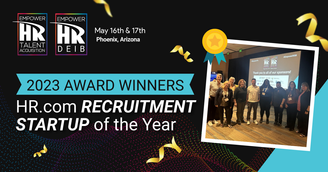First: what is “high-touch?”
Typically you hear the term high-touch associated with luxury hotels, boutique service, etc. The concept actually has a Wikipedia, which defines the term as businesses with a “very close relationship with customers.”
However, very few would describe recruiting as high-touch right now. But it can be. And it’s not all about automation. It’s about automating the right parts to free up recruiters to focus on human conversations that build rapport, grow relationships and restore trust in recruiting.
Ideally this would be recruiting, but we know it’s not often the reality. Instead, in its lowest-performing forms, here are the issues with recruiting/talent acquisition:
- For candidates: They feel like a number. No one is openly communicating with them. If they do get into the process, they do a bunch of interviews where people ask them the same questions, often generic, over and over.
- For hiring managers: They feel like recruiters, be it external or in-house, don’t understand what they need. They feel like they’re not getting the right candidates, or outright getting bad ones. They feel like it’s a waste of their time to keep going to “intake meetings.”
- For recruiters: They feel like rats on a treadmill. It’s search after search, screen after screen, reschedule after reschedule, and the hiring manager relationship is constantly teetering.
In all three buckets, this is hardly “high-touch.”
But could it be?
What would it look like?
Throw out all the buzzwords like “candidate experience” for a second and let’s try to design this conceptually.
- For a hiring manager: They want their time and money protected, and they want good candidates, and they want strong relationships with hiring managers where it feels like the hiring manager “gets” them and they don’t constantly have to call meetings. In essence: low-input, high-output.
- For the recruiter: They want to save time top of funnel, they want to bring in good hires who retain with the company and make the recruiter look good, and they want strong relationships with hiring managers.
- For the candidate: They want to be treated like a human being, and when they get in-process, they want a justified number of interviews (2-4, max) that ask specific questions about the role, and with people who seem to understand what the role is and where it could evolve to.
OK, so that’s the landscape. Is this possible?
Yes, high-touch talent acquisition is possible. Here’s how.
What is needed:
- We need to save time for both the hiring manager and the recruiter. You can do that with technology that allows for one-click scheduling (for the recruiter), easy collaboration on candidates (for both), and audio files divided by specific question so that the hiring manager doesn’t need to commit to a 45-minute interview, but can listen to a few key soundbites.
- Now you’ve saved time. Good.
- You can improve the dynamics between recruiter and candidate because, instead of taking notes, a recruiter can trust the recording to record the candidate, and then the recruiter can be more active in the conversation, leading to a better understanding of the candidate and a high-touch experience on both sides.
- (This is what some call Interviewing 3.0.)
- Because all the interviews are recorded, the best and most senior recruiters can listen to the interviews conducted by junior recruiters and help train them to be better; that’s high-touch on the recruiter-to-recruiter relationship side.
- You can allow recruiters to display their core knowledge of candidates — “Recruiter Intelligence” — which builds trust and rapport with hiring managers, so that hiring managers see recruiters as strategic partners as opposed to Meeting-Scheduling Nuisances.
High-touch is possible. And as you might have guessed since we’re the ones writing this post, HoneIt is capable of all of this.
Let’s talk if you want to see it in action more.



